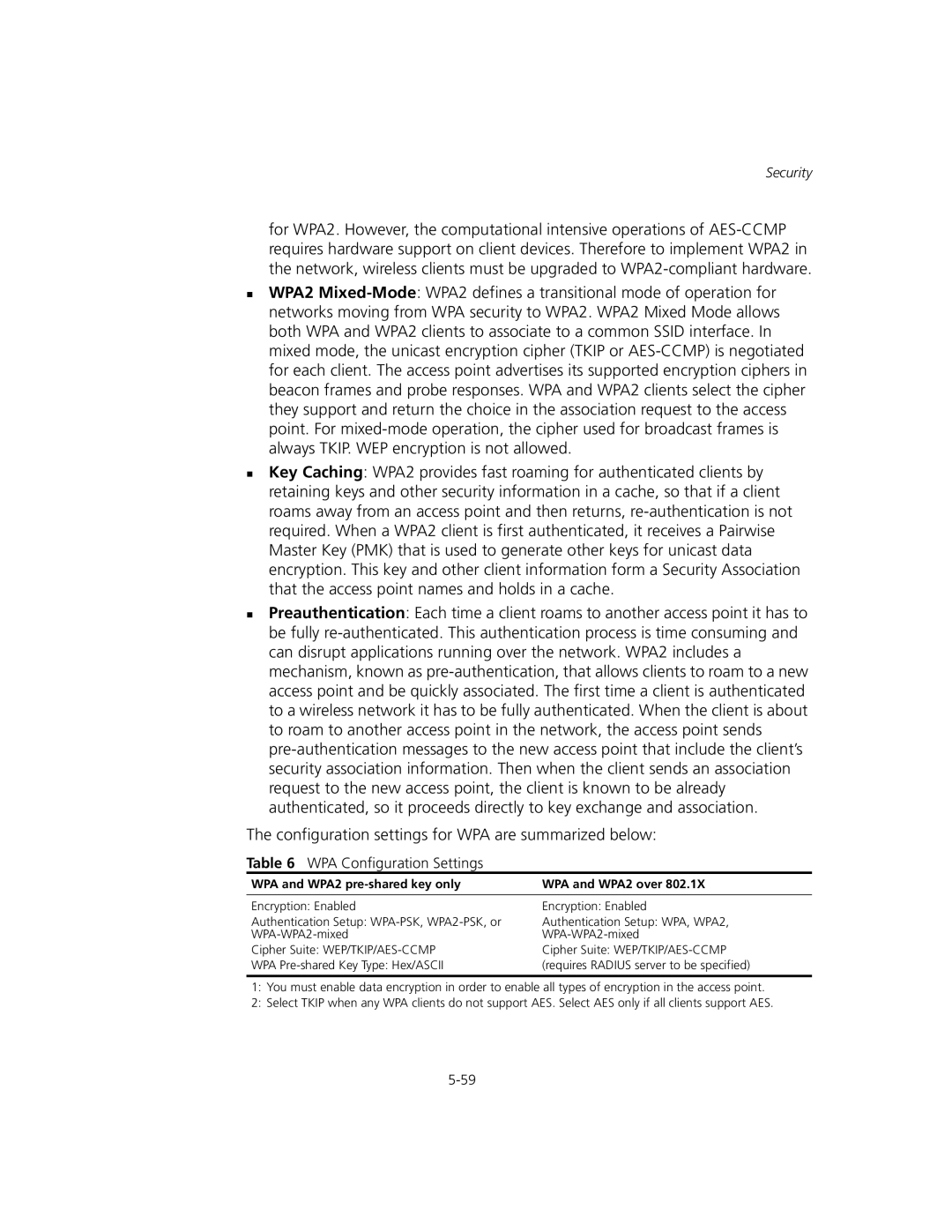Security
for WPA2. However, the computational intensive operations of
WPA2
Key Caching: WPA2 provides fast roaming for authenticated clients by retaining keys and other security information in a cache, so that if a client roams away from an access point and then returns,
Preauthentication: Each time a client roams to another access point it has to be fully
The configuration settings for WPA are summarized below:
Table 6 WPA Configuration Settings
WPA and WPA2 | WPA and WPA2 over 802.1X |
Encryption: Enabled | Encryption: Enabled |
Authentication Setup: | Authentication Setup: WPA, WPA2, |
Cipher Suite: | Cipher Suite: |
WPA | (requires RADIUS server to be specified) |
|
|
1:You must enable data encryption in order to enable all types of encryption in the access point.
2:Select TKIP when any WPA clients do not support AES. Select AES only if all clients support AES.
